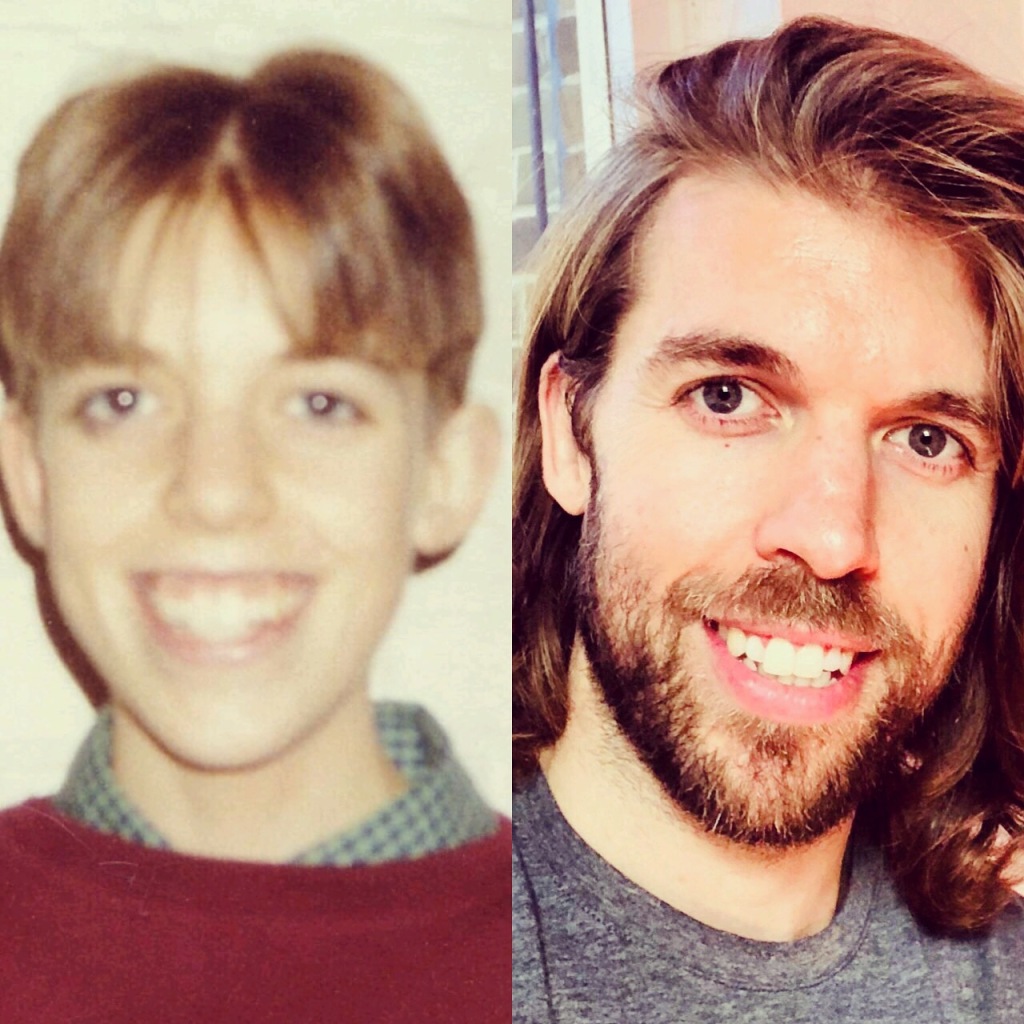At fifteen years old, the height of my anorexia, I weighed just 6 ½ stone (pictured above). What my parents had initially mistaken as a health kick, running with Dad, preparing my own meals, and moving the abs cruncher into my bedroom, developed into an exercise obsession. I would compulsively workout right before bedtime, wedging the abs cruncher in my bedroom doorway (we lived in a small terraced house, so this was the only way to fit my body on the floor space). I would not rest until I had crunched at least 500 times, all the while dreaming of the body that I thought would give me the respect of my peers and make me feel desirable.
I was so confused about a great many things as a teenager. At the time I was suppressing my homosexuality, stunting self-discovery, and fixating on what I thought others would want me to look and act like. It was a magazine article about Leonardo DiCaprio and his then current role in Romeo & Juliet, entitled ‘The Thin White Duke’, that tipped the scales. I reasoned that being thin was why Leo was so revered (it couldn’t possibly have anything to do with his acting skills or his heartthrob status) and I wanted to be just like him. Once I had finished working out, I would get into bed and repeat the mantra, ‘I want to be just like Leonardo DiCaprio’ 100 times before eventually falling asleep exhausted.
I quickly became a fitness fanatic and clutched onto knowledge of exercise from magazines, TV shows, and my peers, not fully contemplating what my body really needed, or that I was causing it a great deal of stress through the combination of excessive cardio and limited calorie intake. Since recovering I have turned my obsession with fitness into a passion and now I work as a personal trainer and dance teacher. I’d like to share a few tips on getting back into exercise after an eating disorder, but also managing the relationship with fitness so that you’re not just replacing one obsession with another.
1. Work on building a healthy and realistic exercise regime. Your focus should be a healthy functional body that will endure rather than worrying about aesthetics.
2. Where possible work with a personal trainer and a qualified and accredited nutritionist. Their knowledge of fitness and dietary requirements will compliment your regime and give reassurance.
3. Try and combine several types of exercise. Obviously, this depends on your fitness goals (a PT will be able to advise you) but don’t just rely on cardiovascular exercises such as running and aerobic based classes. Include weight training, as this is great for developing lean muscle, burning fat, improving bone health and general toning. Yoga and Pilates are also great for conditioning and stretching out your body.
4. Give yourself plenty of rest. Our bodies are delicate and recovering from an eating disorder could potentially make your body more prone to injury or long-term complications. Speak to your GP for advice before undertaking any new fitness regime.
5. It will take time so have patience. Do not obsess with physical changes and try not to compare yourself to others.
6. Following on from the previous point, avoid relentlessly scrolling through pictures of models and celebrities on social media as this is sub-conscious sabotage!
7. Enjoy exercising. For me it’s a form of meditation, a cathartic way to calm my mind and organise my thoughts.
8. Be proud of your body and what you can do with it.
Remember overcoming an eating disorder is an ongoing battle that will occasionally rear its ugly head and knock you for six. I no longer starve myself, but I do recognise when the disorder takes hold of me in another form. I can give myself too many rules regarding food and I tend to over exercise. That’s normally when I get ill, so I’m forced to listen to my body. Listen to yours and look after yourself. Life is made to be enjoyed so make sure you’ve got a healthy body to do just that.
